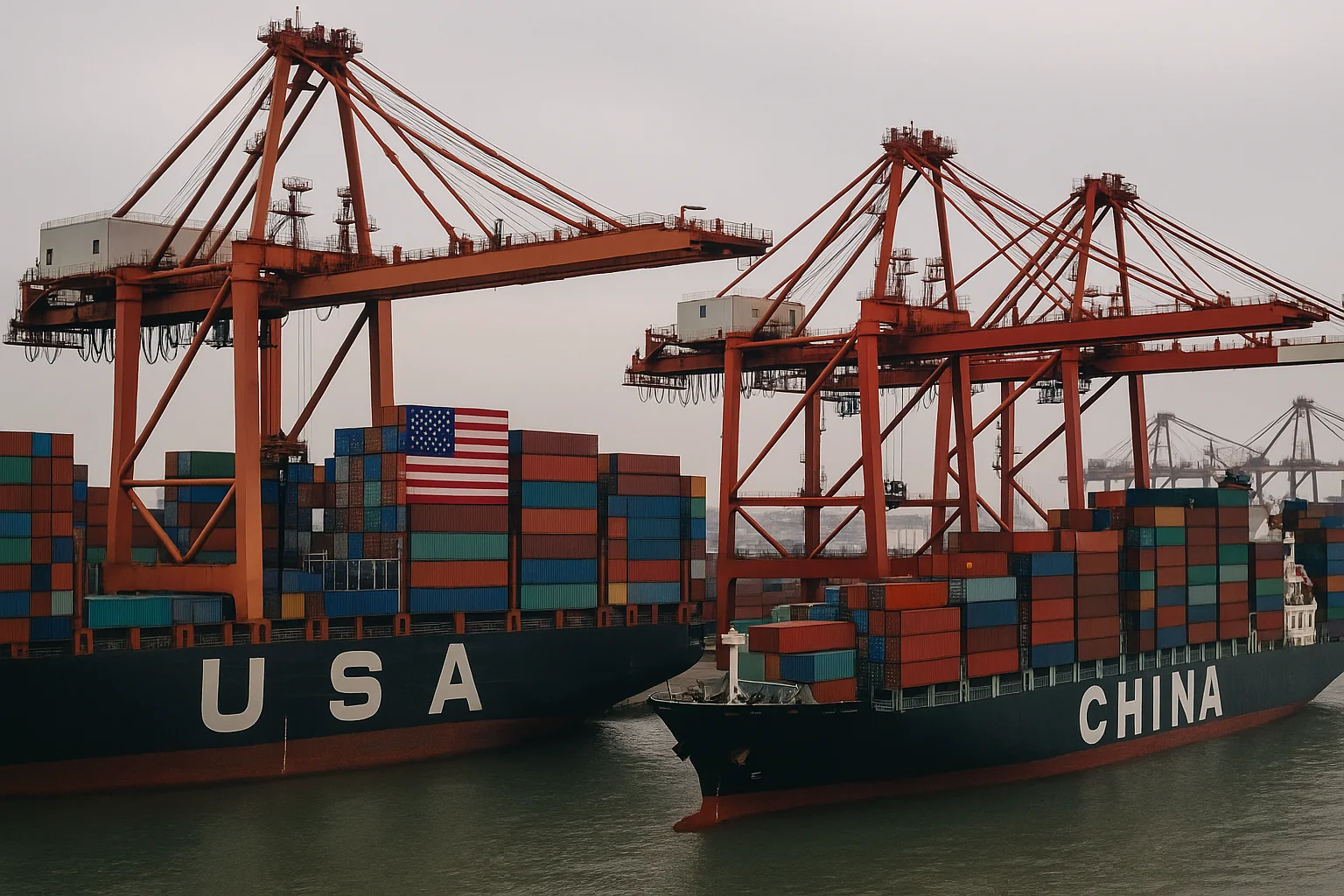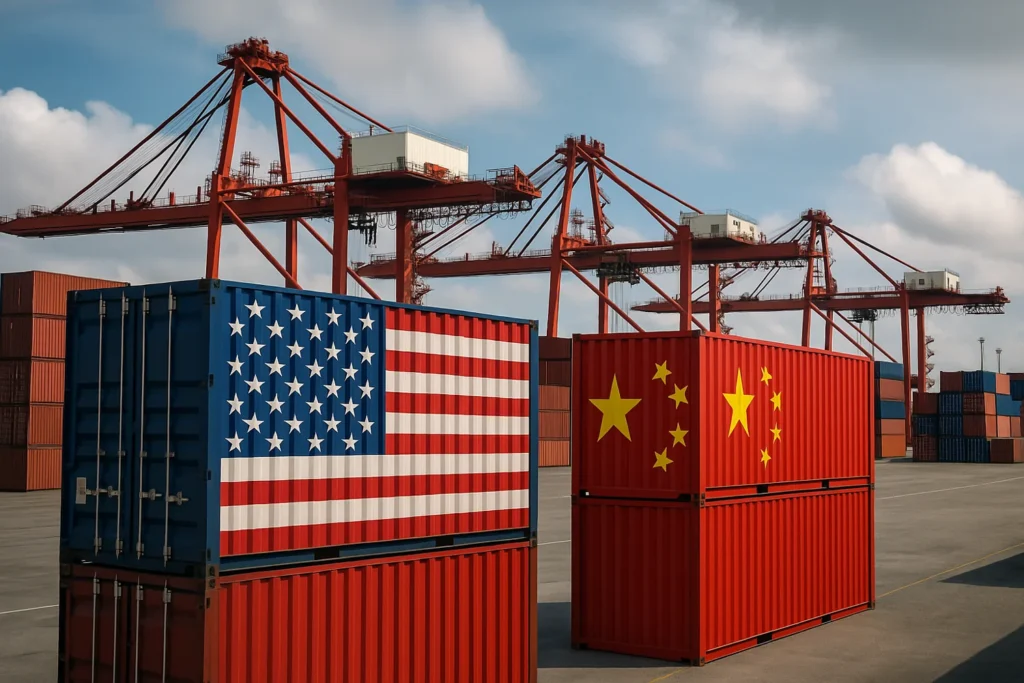When Washington and Beijing impose port fees on each other, the world should pay attention. The US China port fees confrontation is not just another tariff tit-for-tat—it’s a declaration that global trade stability no longer exists. What began as an obscure maritime policy spat now risks becoming the most destructive trade escalation since Trump’s tariff war.
Context: The official story of ‘reciprocity’
The United States announced new port charges on Chinese shipping companies, citing unfair advantages in logistics subsidies and opaque state control of cargo routes. The measure, according to the U.S. Department of Transportation, “levels the playing field.”
China’s Ministry of Commerce retaliated within hours, imposing equivalent port fees on U.S.-linked shipping firms. Both nations claim they’re only restoring fairness.
But fairness has never been the point. This is about dominance over global logistics arteries—the invisible infrastructure of globalization. According to Reuters, roughly 11–13% of global container and crude tanker fleets could be directly affected, touching everything from toys to energy shipments.
Oppositional Argument: When the ‘rules’ become weapons
Let’s not pretend this is about trade balance or legal parity. It’s about control. The US China port fees episode proves that ports are the new battleground for global influence—chokepoints where policy becomes power.
Washington wants to weaken China’s logistics empire, from Shanghai to Djibouti. Beijing, meanwhile, is signaling that it can hit back not just with tariffs but with maritime bottlenecks that choke Western supply lines.
The Biden administration’s officials may dress it up as “defending fair competition,” but the strategy mirrors Trump’s raw protectionism—with cleaner language and the same outcome: inflation, supply chain chaos, and geopolitical fragmentation.
Analytical Breakdown: Global consequences in motion
When shipping routes get taxed, inflation follows. Oil, electronics, and holiday goods—all depend on the fleets now caught in this geopolitical crossfire. The cost of moving a container from Shenzhen to Los Angeles could jump by 8–12% within weeks, analysts at Maritime Economics Ltd. estimate.
The shockwaves will hit beyond trade hubs. Emerging economies that rely on re-exporting through China’s ports will feel squeezed first. Vietnam, Malaysia, and Indonesia, once hailed as “China+1” supply-chain saviors, now risk collateral damage.
Meanwhile, logistics giants like Maersk and COSCO face an impossible choice: reroute and lose time or comply and pay more. Either way, consumers from Berlin to Boston will foot the bill.
This is not reciprocity—it’s escalation in disguise.
The real goal: reshaping the maritime map
The deeper agenda is strategic. The U.S. has been quietly backing port infrastructure in India, Greece, and the Philippines as alternatives to China’s Belt and Road network. The port fees are part of that playbook: make Chinese logistics costly, and Western allies’ ports look more attractive.
Yet Beijing anticipated this years ago. Its state-owned shipping conglomerates already hold equity stakes in terminals across Africa, the Middle East, and even parts of Europe. Blocking Chinese ships in California won’t stop their influence in Casablanca.
Human Perspective: The supply chain hits home
For the ordinary worker, this isn’t about geopolitics—it’s about grocery bills. Every dollar added in port fees trickles down to the store shelf.
Logistics managers in Long Beach report shipping costs already up 9% week-over-week. “We’ll have to push it onto the customer,” one operator admitted anonymously. Chinese exporters, for their part, warn that their American partners are “reconsidering volumes.”
A small importer in Ohio shared that his Halloween stock—plastic decorations from Guangdong—is now delayed indefinitely. “The cargo’s stuck somewhere between Shanghai and Honolulu. We’re losing the season.”
That’s the human cost of US China port fees: ordinary people paying for great-power games.
Counterarguments
Critics might argue these fees are temporary or symbolic. Washington insists they target only a handful of “state-influenced” carriers, not the entire system. But this logic ignores the chain reaction.
Once Beijing responds—which it already has—global freight companies must adopt new risk premiums. Insurance rates rise. Charter contracts adjust. Prices inflate. Symbolism becomes policy the moment markets react.
Another counterpoint: that the U.S. is simply protecting domestic shipping from Chinese state dumping. Yet the Jones Act, protectionist by design, already isolates American shipping from foreign competition. The new port fees thus double down on inefficiency while pretending to defend it.
Conclusion: The illusion of controlled escalation
There’s a dangerous illusion in Washington and Beijing—that they can escalate without consequence. History disagrees. From Smoot-Hawley tariffs in the 1930s to Trump’s trade wars in the 2010s, economic nationalism has always ended in consumer pain and political backlash.
Today’s US China port fees mark a turning point. They weaponize logistics, the last neutral ground of globalization. What’s next—digital tariffs on cloud infrastructure, or “security fees” on semiconductor shipments?
Trade is no longer about economics. It’s become statecraft disguised as customs paperwork. And as both powers dig in, the rest of the world will pay—not in ideology, but in prices.
The oceans are vast, but the global economy just got smaller.
External Links
66 views






